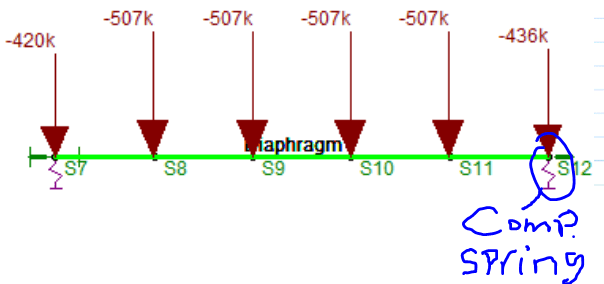cucu101
Structural
- Dec 23, 2016
- 8
Greetings all!
May be this is something basic... but I feel like I'm drowning in an empty pool. My current problem is that usually when I use structural analysis software's like Risa, RAM elements, etc.
I have never had to use a spring as my support/boundary condition, and just recently I was reviewing a fellow engineer calcs package and realized that he was using a spring as his support.
My question is, when should I use a spring, and how do I determine the magnitude of the springs stiffness?
any guidance will be greatly appreciated.
Thanks!

May be this is something basic... but I feel like I'm drowning in an empty pool. My current problem is that usually when I use structural analysis software's like Risa, RAM elements, etc.
I have never had to use a spring as my support/boundary condition, and just recently I was reviewing a fellow engineer calcs package and realized that he was using a spring as his support.
My question is, when should I use a spring, and how do I determine the magnitude of the springs stiffness?
any guidance will be greatly appreciated.
Thanks!

